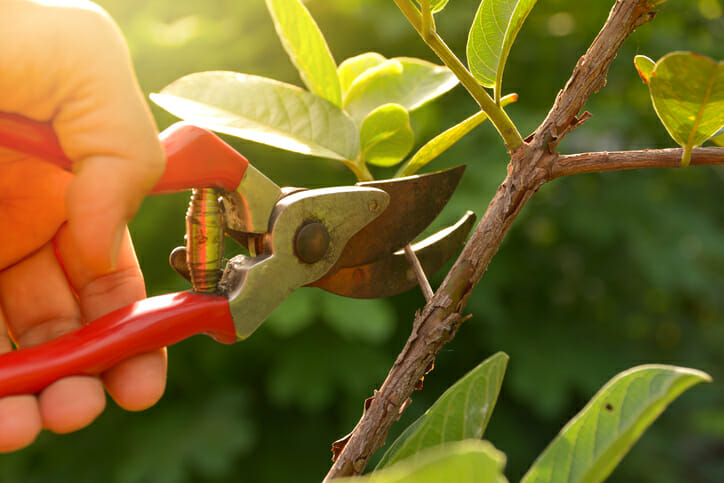How to Take Care of Trees
Learn how to take care of your trees with advice from professional arborists.
Taking good care of your trees will make them healthier, stronger, and more visually appealing. Good tree care also often makes your trees safer to be around by removing dangerous, damaged limbs or hazardous overgrowth.
The certified arborists at Pacific Arboriculture provide essential tree care through our pruning service. This goes beyond a simple landscaping service. Our arborists know trees and provide the pruning expertise your trees need.
Here are a few DIY tips for how to take care of trees and shrubs in a variety of scenarios.
If you have any questions or think your tree needs pruning, get a free estimate. We also offer tree removal.
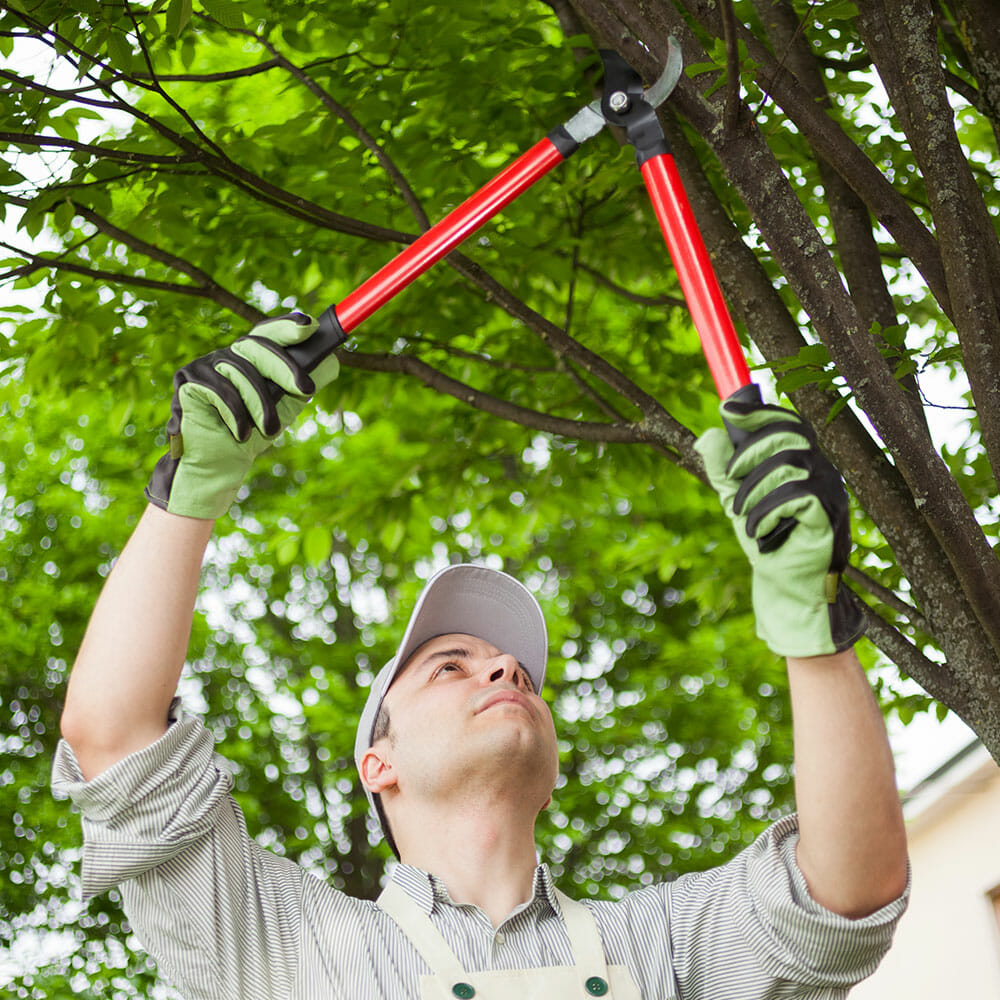
Tree Care 101
Care for your tree will require a combination of pruning, watering, mulch placement, and monitoring your trees for signs of health problems.
Everything from the seasons to the type of trees you have will change the combination of care your trees need. If you plan to plant new trees or transplant trees into your yard, consider the care required for each type of tree before deciding on one.
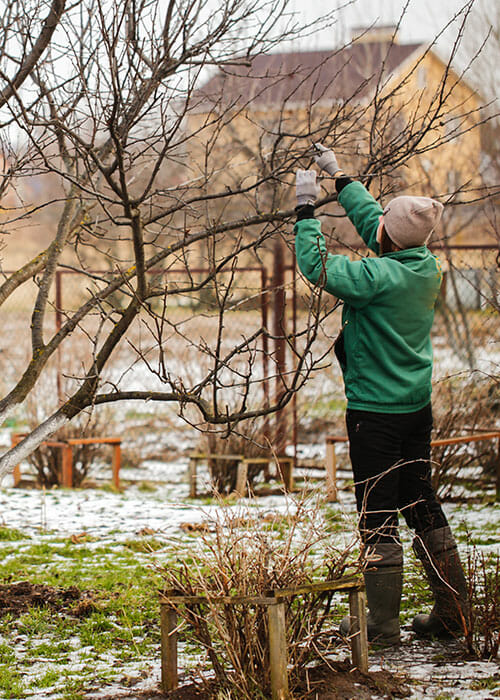
How to Care for Trees in the Winter
Winter tree care tips, or cold weather tree care, may be the most important. First, if you want to plant or transplant a tree, do it during the fall. That will give it the entire wet season to spread its roots.
Prepare your trees for winter to get a head start on spring tree care. Examine your trees. Take note of any damaged limbs, discolorations, or other signs of damage.
Prune broken branches off your trees. The type of trees and the type of damage you remove will affect whether you should prune the limbs in the fall or the winter. We strongly recommend letting our professional arborists handle that for you.
If you notice disease or insect damage on your trees, call us. We can give you a professional assessment and offer you advice on how to proceed.
Finally, lay down some organic mulch at the base of your tree. Leave a small gap around the tree’s trunk. Your mulch should be about an inch or two away from the tree, not touching it.
How to Care for Trees in the Summer
If you prepared your trees for winter, you helped yourself get started on your summer tree care.
Check on your trees and mulch regularly.
Watch for cracks, cuts, or scars in your tree’s bark. Take note if your tree seems dry, brittle, or discolored. Also, look for fungus or insect colonies living in or on the tree. Any of these could be symptoms of a pest-infested or unhealthy tree. If you notice these symptoms, let us help you diagnose your tree. Contact us for a free quote.
Keep a layer of mulch at the base of your trees. Mulch prevents weeds, reduces temperature fluctuation in the soil, holds onto moisture, and provides nutrients to your tree as it deteriorates. The mulch should remain about three inches thick.
As your mulch slowly decays into the soil, you will need to replace it to maintain its benefits. The mulch layer around the base of your trees should be about three inches thick. When you notice it creeping under two inches, top it off to four.
Remember to leave an inch or two of space between the trunk or the tree and the mulch. Mulch decaying as it rests against a tree’s trunk can cause the tree to rot.
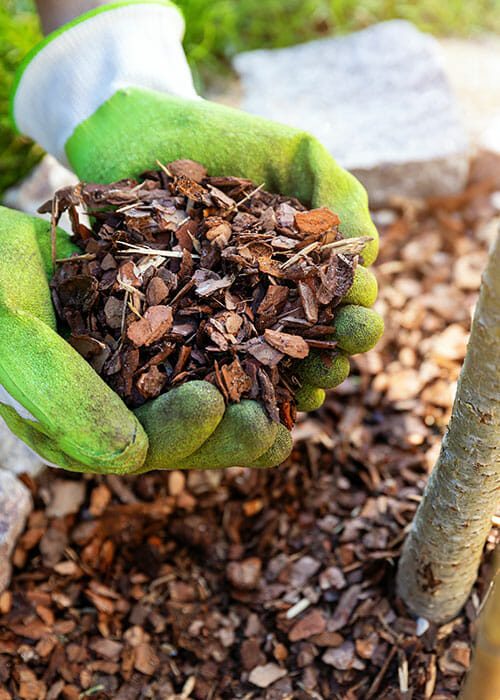
Caring for Trees in Drought
Adjust your watering and mulch levels when caring for a tree under drought conditions.
Municipal water restrictions can make caring for your trees difficult during droughts. Those restrictions mean you need to get every last bit of benefit out of every drop of water. That starts with prioritizing which of your plants get water first.
Trees should get top priority with your water. Lawns can recover in a season. Decades-old trees will require decades to replace if they die from the drought. Water young trees first, then trees with limited ground access, like those on a drive strip. Next, water your remaining mature trees. Finally comes your lawn.
Water your trees differently than your lawn. While you can water your lawn in short spurts every few days, that won’t work well for your trees. Water your trees slowly over a few hours every couple of weeks. Use a long screwdriver or shovel to check the moisture level of your soil near your tree’s drip line (the circle created by its farthest-reaching branches), about eight to twelve inches below the surface. When it’s dry that deep, water your tree.
Don’t water your tree’s leaves—water its root system. Watering the root system will be slightly different for young and old trees. We’ll go over those details in the next section.
Increase your mulch depth during droughts. The moisture-trapping benefits of mulch become even more vital during times of low water. Make your mulch up to six inches deep and spread as wide as the tree’s drip line during droughts. Use wood chips, leaves, pine needles, or other organic mulch. Rocks or gravel mulch can make doubt conditions even harder on your trees.
Deeper mulch will hold more moisture and prevent more weeds from competing for your tree’s precious water. Give deeper mulch a little more space away from your tree trunk so that the mulch pile won’t inadvertently tumble onto your tree’s trunk.
Don’t do any heavy pruning during a drought. However, you should remove any obviously damaged branches and take up valuable resources from the healthy parts of your tree.
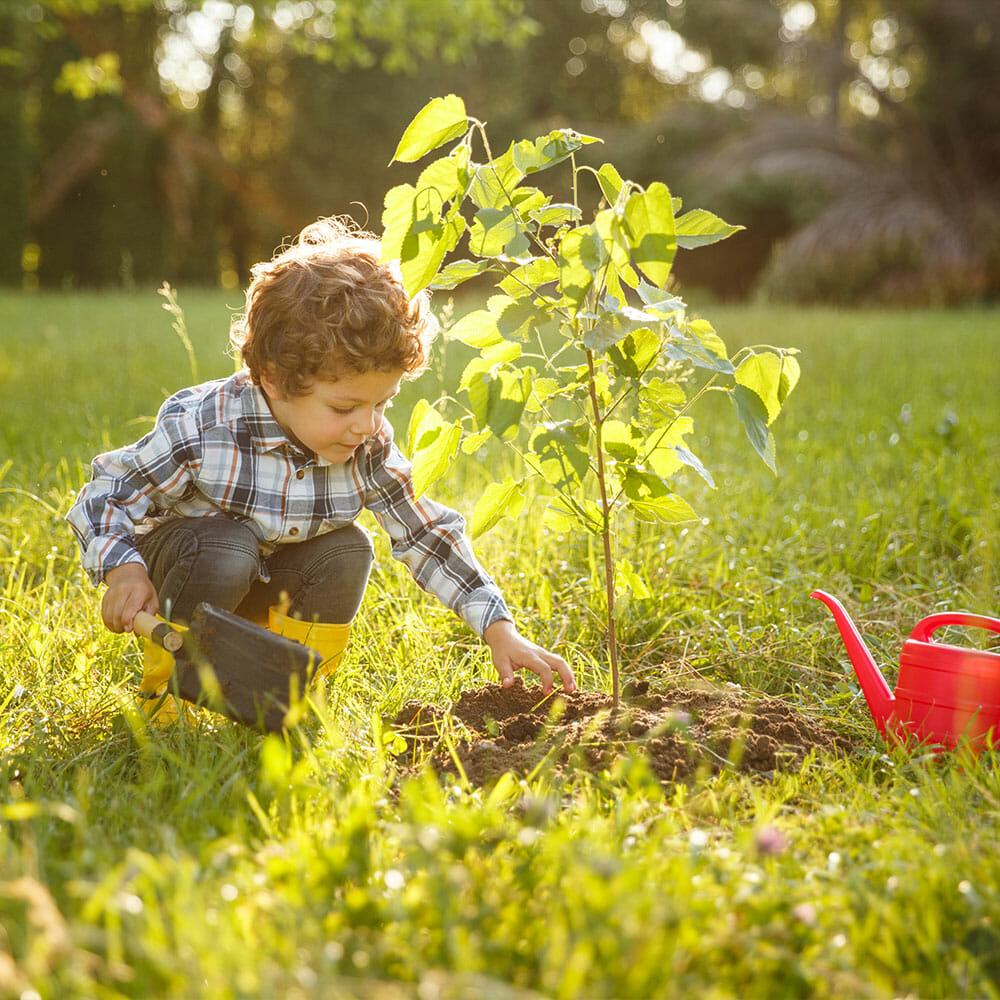
How to Take Care for New Trees
Whether seedlings or transplants, young trees need different care than more mature trees. If you’re planting a new tree, choose one with the characteristics to thrive in your yard. Also, remember that having a diverse array of trees can help prevent insect infestations. For help selecting the right tree for your yard, consult our certified arborists.
Trees take years to establish their root systems. Trees less than five years old don’t have root systems solidly grown yet. Account for this when watering. Water young trees more often and closer to the trunk base than older trees. Young trees need about 10-15 gallons of water per week. Let that water drip slowly down into the soil 10-18 inches under the tree’s drip line for a few hours.
How to Care for Mature Trees
Mature tree care has its particulars, too.
The roots of older trees reach farther than their drip lines. For older trees, you should water in a circle with a radius as far as two-thirds of the tree’s height. For example, if you have a 15′ tall tree, water 10′ from the trunk in every direction. Watering directly at the base of the trunk won’t put the water where your tree’s roots can reach it.
When determining how much to water, check the soil 10-18 inches down. Water mature trees roughly three times per month. For each watering, the tree will need about 10 gallons of water per inch of the width of its trunk. So a tree with a five-inch diameter trunk will need about 50 gallons of water three times a month. That relates to roughly 10 minutes of a moderate, constant soak.
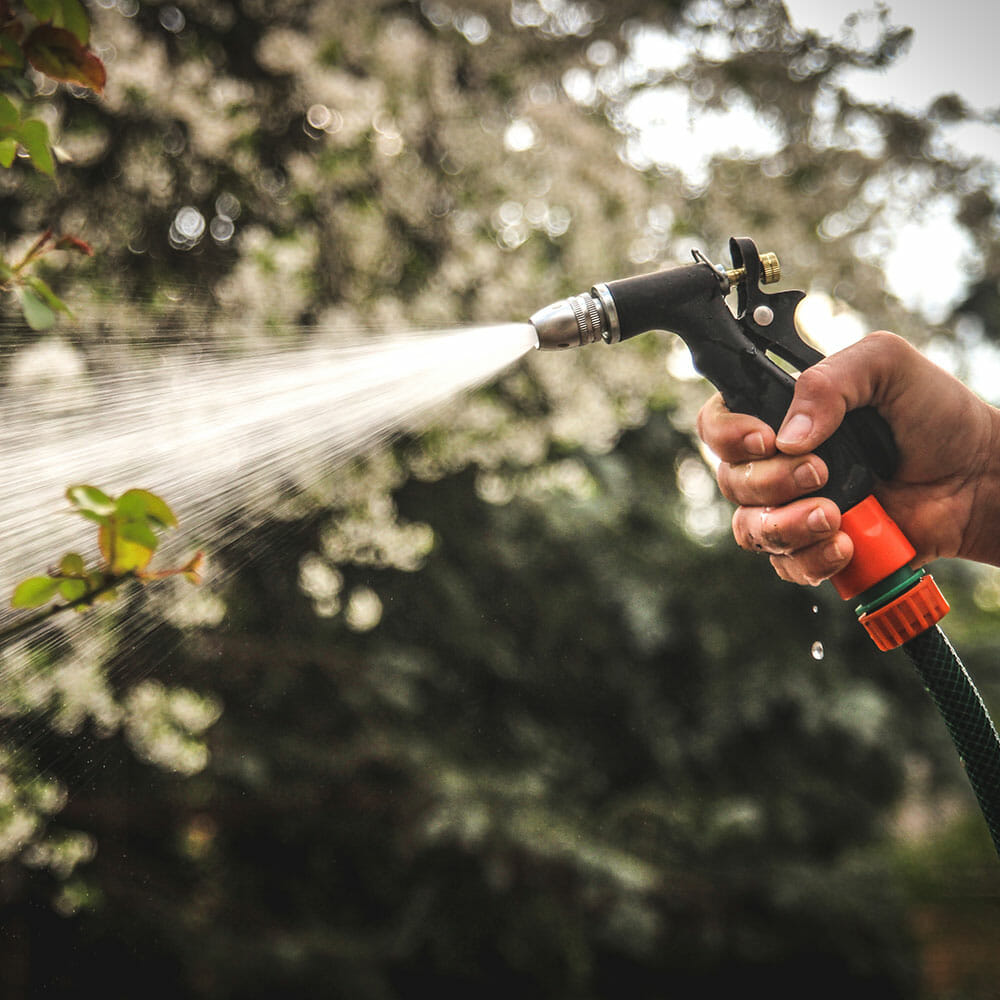
Home Tree Care by Type of Trees
Now that you have an idea of how to take care of trees in general, we’ll go over a few extra details for common types of trees.
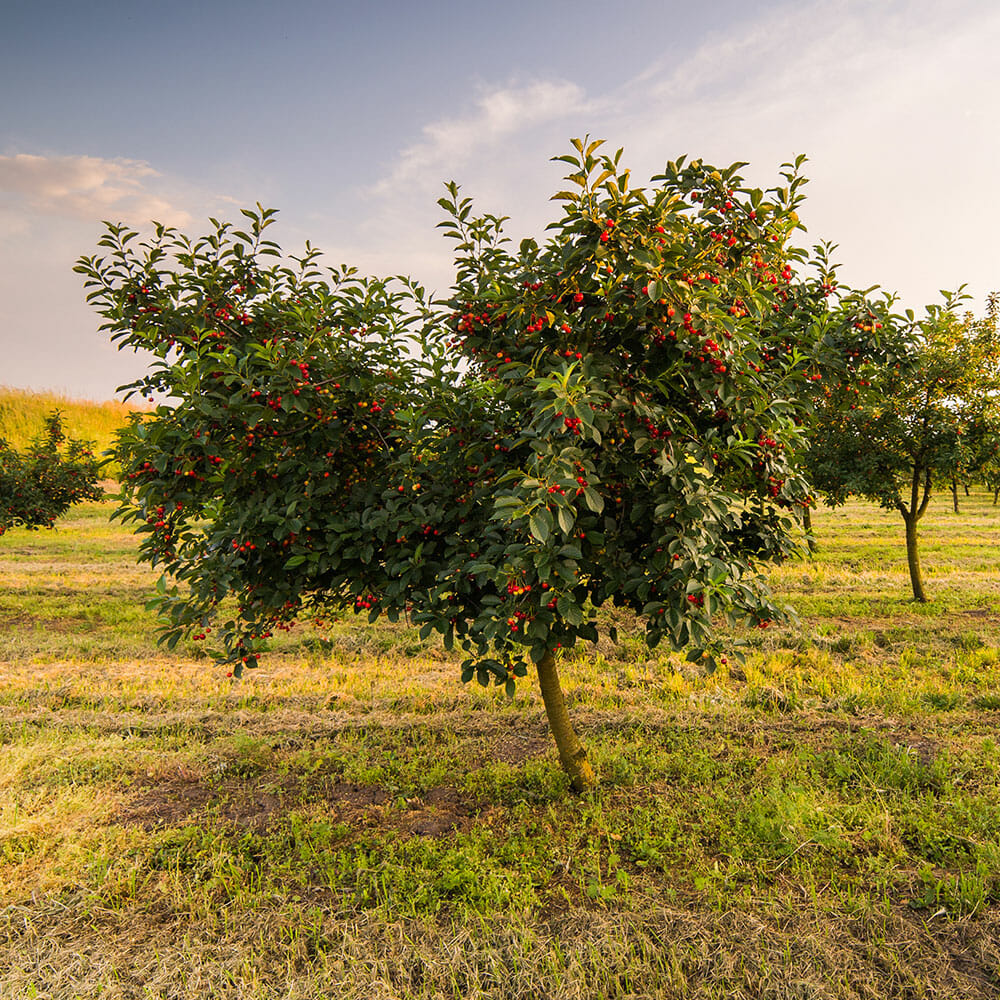
Caring for Cherry Trees
Cherry trees grow best on high ground. Cherry trees need fertile soil, a good amount of sunlight, and lots of air. The soil under cherry trees needs to drain well, or your trees could get root rot.
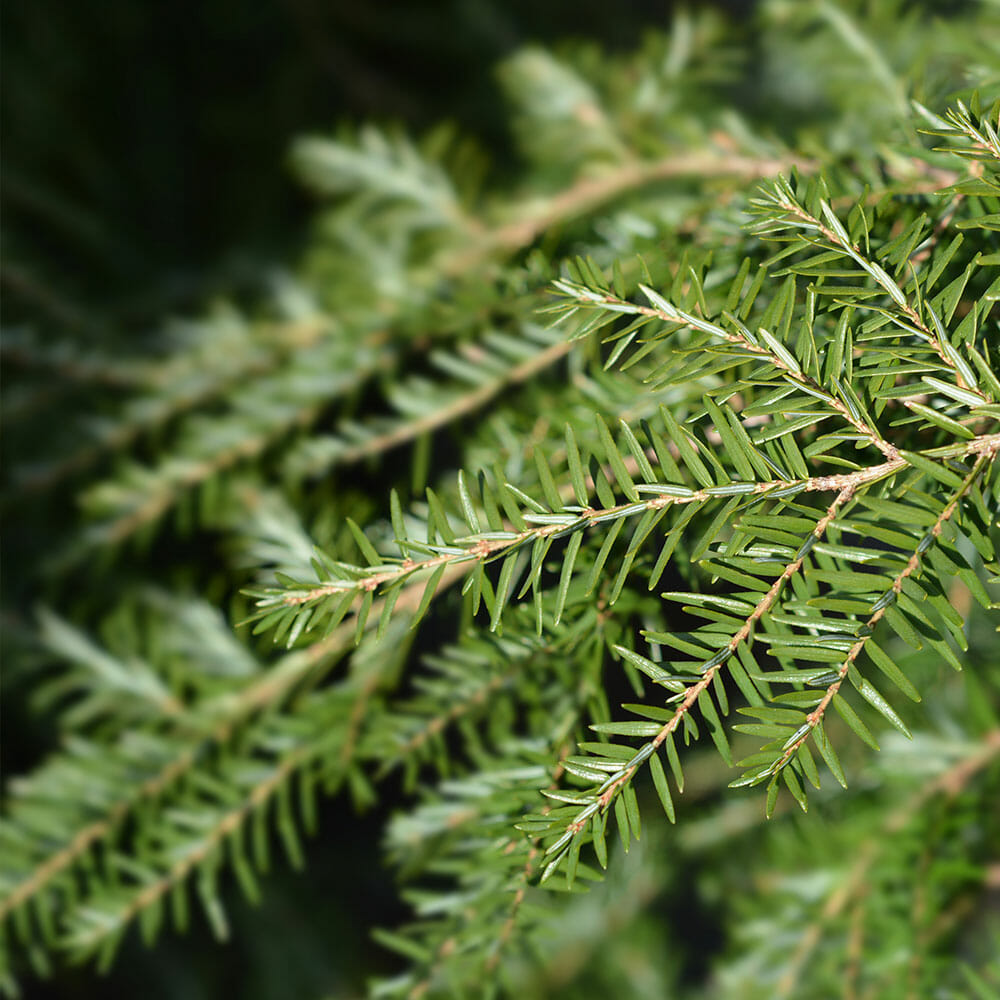
Caring for Hemlock Trees
Hemlock trees grow best with a little bit of shade and rich, acidic soil. The soil should be moist, cool, and have good drainage. They fare best in cool climates and require more water than trees of similar size.

Caring for Cedar Trees
Cedar trees don’t require much care beyond the basics. Just let the soil dry completely between waterings.
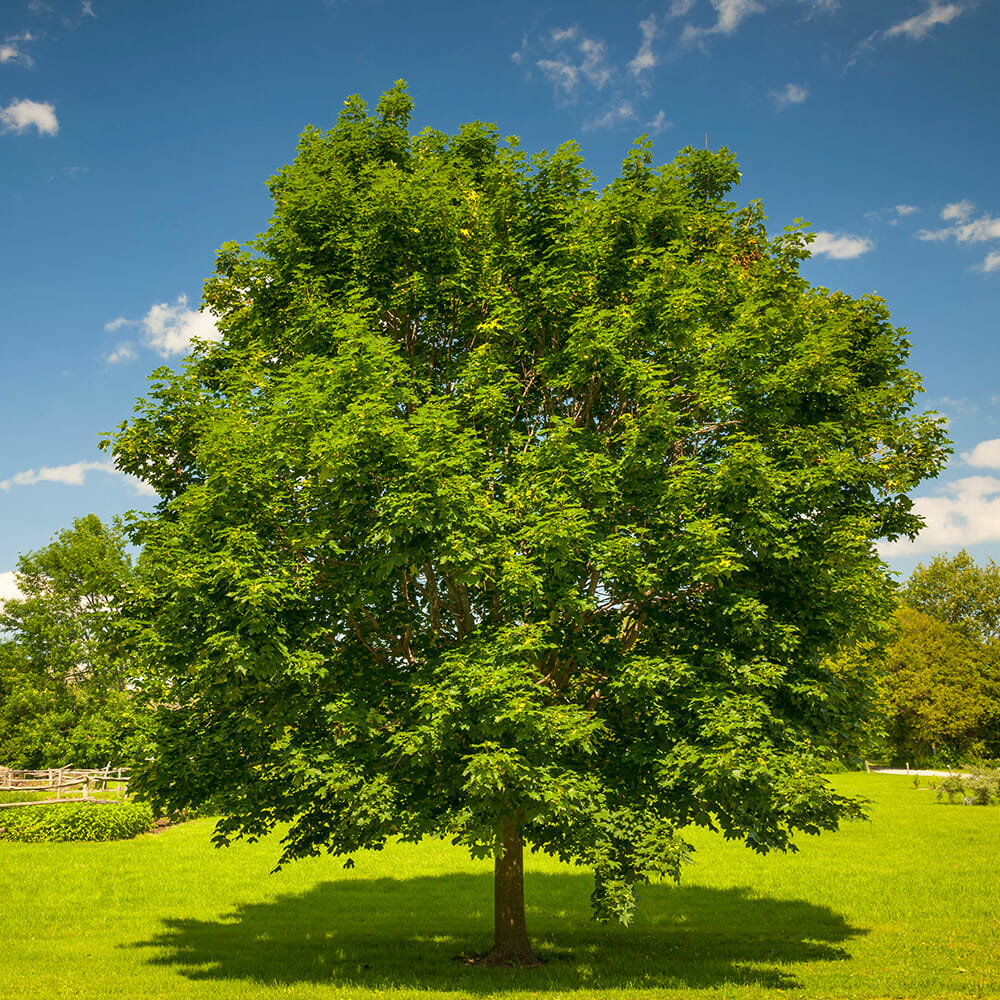
Caring for Maple Trees
Maple trees require about 11 gallons of water per week. Prune your maple trees in the late spring or summer. Watch for signs of disease.

Caring for Fir Trees
Fir trees will respond to basic tree care. Keep the soil moist. Water heavily in the fall and add compost to your mulch to give your tree some extra nutrients.
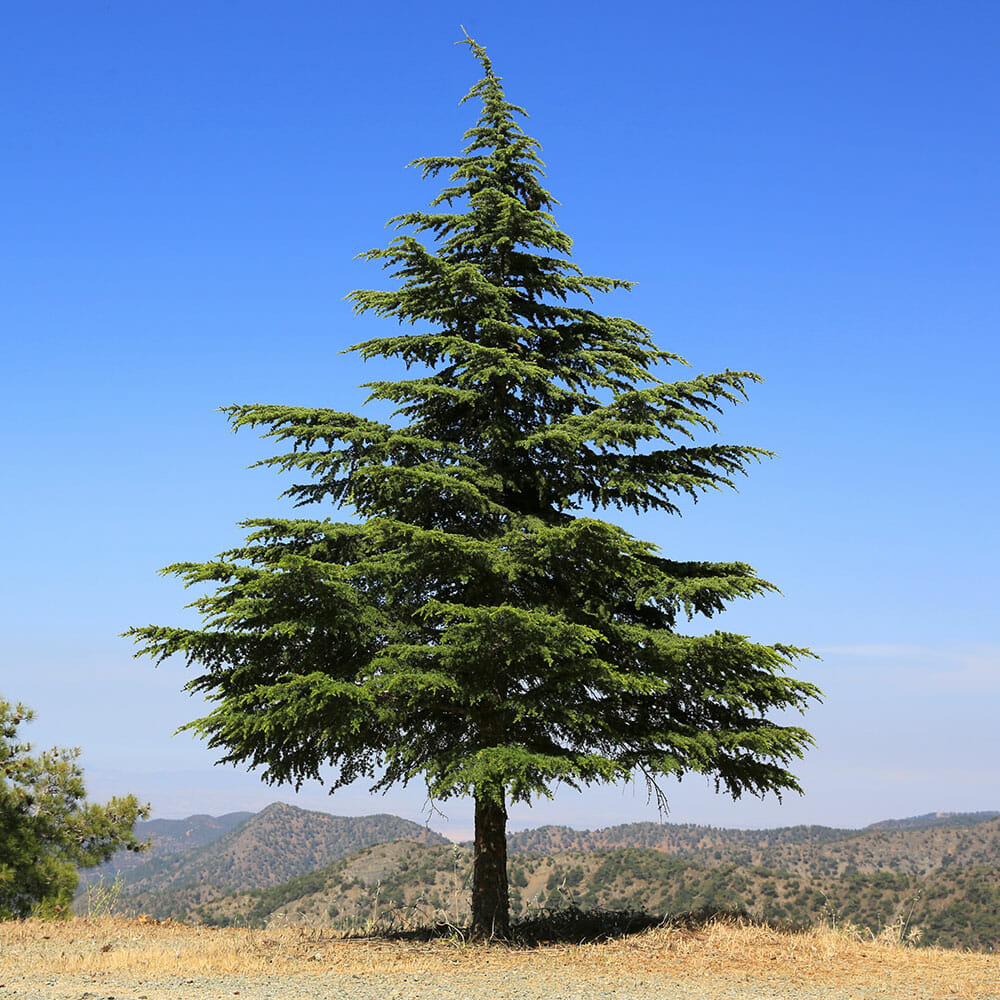
Caring for Pine Trees
Pine trees won’t require much care beyond the first year. During the first year, water weekly and don’t add fertilizer.
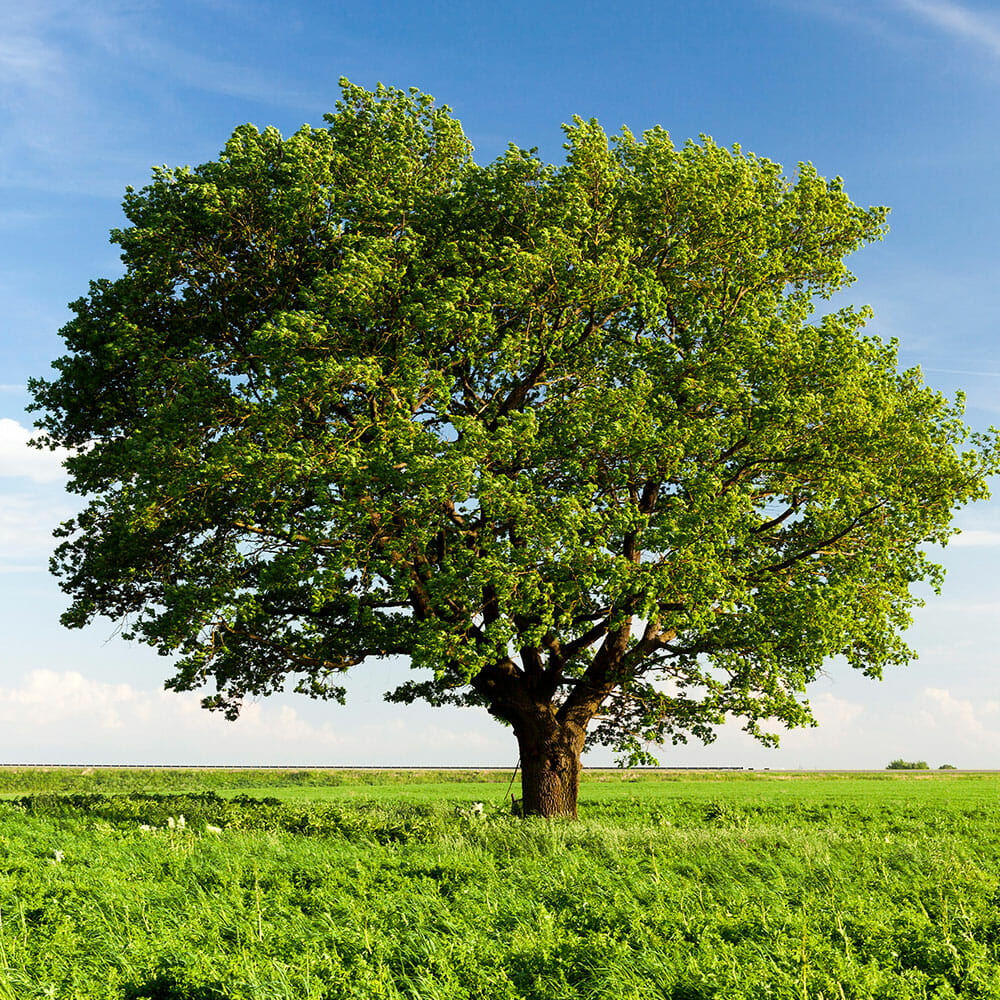
Caring for Oak Trees
Oaks need lots of sunshine. They also need soil that drains well. If you live in a climate with dry winters, you may need to soak your oak in the spring.
Proper Care For Your Trees
A landscaping company performing routine yard maintenance won’t fully understand the specific health needs of your various trees. They specialize in plants and shrubs, not trees. The International Society of Arboriculture (ISA) Certified Arborists at Pacific Arboriculture are trained and tested professionals with extensive knowledge of tree care. Only an ISA Certified Arborist rigorously retains the required knowledge and skill to properly care for trees.
Contact Pacific Arboriculture today to get a free estimate on pruning or other tree services.

